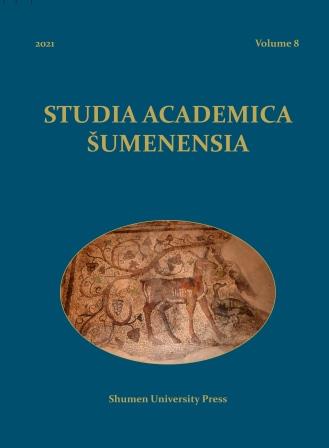Archaeological evidence of Bulgaria’s contacts with the Latin Empire and the Roman Church in the first half of the 13th century Preliminary remarks
Archaeological evidence of Bulgaria’s contacts with the Latin Empire and the Roman Church in the first half of the 13th century Preliminary remarks
Author(s): Angel NikolovSubject(s): History, Cultural history, Middle Ages
Published by: Шуменски университет »Епископ Константин Преславски«
Keywords: Kaloyan of Bulgaria; Church union of 1204; Innocent III; Limoges enamels; Pilgrim badges; Pleven fortress; Hotalich; Lead seals
Summary/Abstract: In the first half of the 13th century, Bulgaria had unusually intense political and ecclesiastical contacts with the West, which has its logical explanation with the dramatic changes in the Balkans due to the conquest of Constantinople by the troops of the Fourth Crusade in April 1204 and the rise of the Latin Empire as a leading factor in the politically fragmented Byzantine space. Concerned about the confused and unpredictable situation in the region, the Bulgarian Emperor Kaloyan (1196-1207) exchanged several letters with Pope Innocent III (1198-1216) and eventually subordinated the Bulgarian Church to the Roman See. In return, on November 8, 1204 the papal legate Leo Brancaleoni anointed him and placed a royal crown on his head. On April 14, 1205, Kaloyan defeated the Latin troops near Adrianople and took as a captive Emperor Baldwin I (1204-1205), who ended his life in Tarnovo. From then until 1261, Bulgaria and the Latin Empire would more than once meet on the battlefield, and sometimes they would be allies, which largely depended on their relations with other neighbouring powers – Epirus, Serbia, Hungary, Nicaea. The purpose of this article is to analyse some archaeological evidence of Bulgaria’s contacts with the Latin Empire and the Roman Church in the first half of the thirteenth century, some of which only came to light in recent years. Although relatively scarce and heterogeneous, these materials deserve further attention and should be subject to more in-depth interpretations: the lead seals of Latin emperors from Bulgaria (especially those of Baldwin II, found in the fortress of Pleven and in the vicinity of Popovo), a fragment of an early thirteenth-century Romanesque bronze crucifix with gilding from a processional cross found in Preslav, a bronze gilded figurine of a saint with enamel decoration, made in Limoges, discovered in 2018 in Veliko Tarnovo, as well as a lead pilgrim badge from the Saint Peter’s Basilica in Rome, discovered in 2017 in a mid-thirteenth-century tomb in the medieval town of Hotalich, near Sevlievo.
Journal: Studia Academica Šumenensia
- Issue Year: 2021
- Issue No: 8
- Page Range: 227-260
- Page Count: 34
- Language: English

